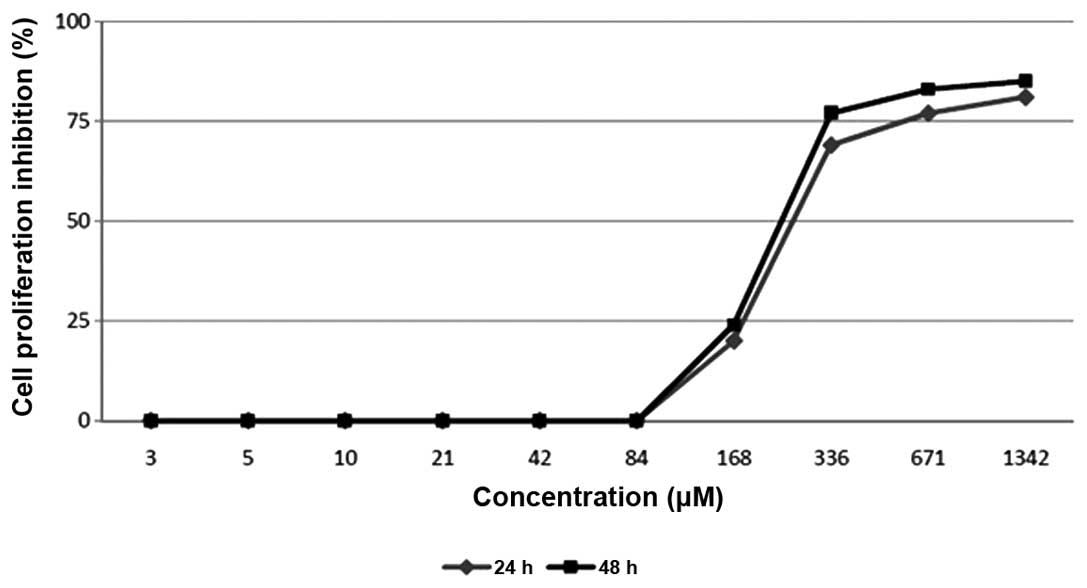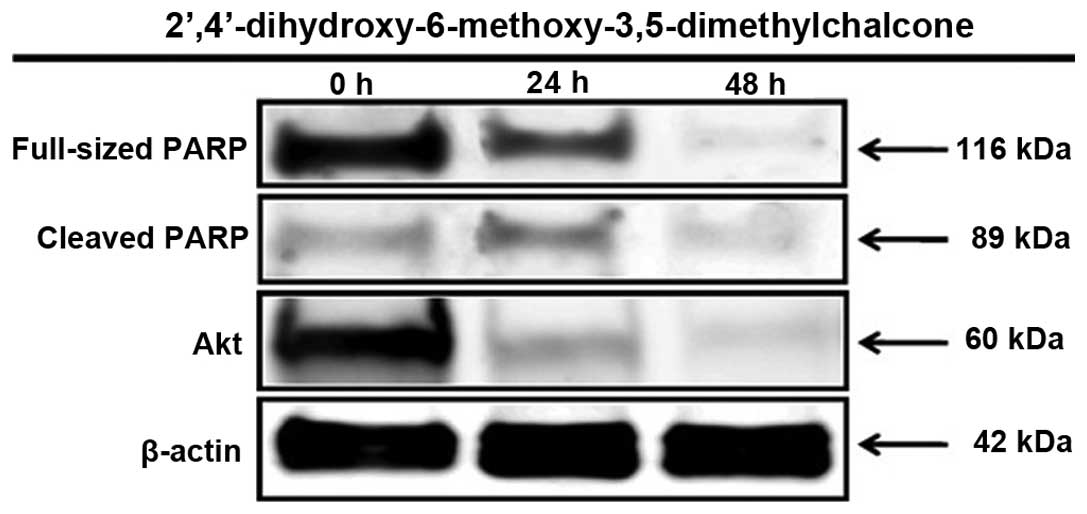Apoptosis induced in MCF-7 human breast cancer cells by 2',4'-dihydroxy-6-methoxy-3,5-dimethylchalcone isolated from Eugenia aquea Burm f. leaves
- Authors:
- Published online on: February 24, 2015 https://doi.org/10.3892/ol.2015.2981
- Pages: 2303-2306
Metrics: Total
Views: 0 (Spandidos Publications: | PMC Statistics: )
Total PDF Downloads: 0 (Spandidos Publications: | PMC Statistics: )
Abstract
During a previous study that aimed to identify anticancer agents within primate‑consumed plants, the present group identified that Eugenia aquea (E. aquea) possessed potential as a source of anticancer agents. The ethanol extract of E. aquea leaves exhibited strong inhibitory activity against the proliferation of the human breast adenocarcinoma MCF‑7 cell line. The inhibition of proliferation was determined using an MTT assay. The present study was performed to isolate the active compound within the E. aquea leaves that generated the aforementioned activity, and resulted in the isolation of 2',4'‑dihydroxy‑6‑methoxy‑3,5‑dimethylchalcone, which was identified through the analysis of spectroscopic data. This compound was examined for its inhibitory activity against the MCF‑7 cell line using a MTT assay, and the ability of 2',4'‑dihydroxy‑6‑methoxy‑3,5‑dimethylchalcone to induce apoptosis through the activation of the poly(adenosine diphosphate‑ribose) polymerase (PARP) protein was also investigated. The results of the present study revealed that the isolated compound inhibited cell proliferation in a dose‑dependent manner, possessed an IC50 of 74.5 µg/ml (250 µM) and promoted apoptosis via the activation of PARP. It was concluded that these results indicated a requirement for additional investigations into 2',4'‑dihydroxy‑6‑methoxy‑3,5‑dimethylchalcone in order to provide a basis for the use of this compound in the management of cancer.













